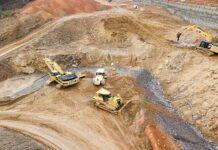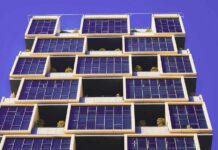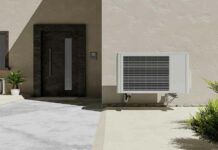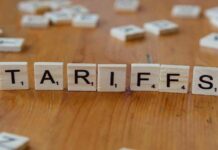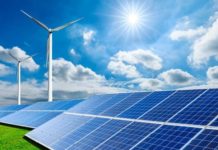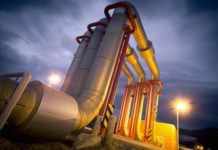Questions By World Construction Today (From Pgafrica)
1. Which country, with significant gas deposits, is leading the way for furthering gas-to-power projects to meet growing electricity demand?
Presently, the U.S. is furthest along on the gas-to-power path with nearly all new large-scale generation installations being gas-fired. There is a great deal of renewable power development underway, but gas-fired power installations are much larger, with unit size and volume of activity growing rapidly, and compliment renewable power from a grid stability perspective because of their flexibility of generation.
2. As there are multiple options for vaporizing LNG?
Yes, vaporizing can be accomplished with a variety of methods. In large scale send-out plants, sea water is often used for vaporization. Gas-fired vaporizers are sometimes used where sea water is not feasible. The gas-fired units, called submerged combustion units, are very high efficiency water bath style heaters. But of course, gas is consumed in this process. In some locations, air coolers can be used to warm the LNG with backup heat sources during the colder seasons. One of the most efficient means of vaporizaton is to use waste heat, as Black & Veatch did in the Peñuelas plant project in Puerto Rico. Not only can the heat be used to vaporize LNG, the cold from the LNG can be used in the turbine operation (as discussed in our paper). Black & Veatch has also published articles on LNG vaporization.
3. In which part of the world are successful LNG projects being implemented?
LNG projects can be found all over the world. In North America for example, the success of the shale gas revolution has developers reconfiguring several import terminals to export facilities for LNG. Large suppliers of LNG to the international market include, Trinidad, Australia, Indonesia, Papua New Guinea, the Middle East and North Africa. These countries continue to develop new supplies. In China, Black & Veatch has over 20 projects supplying LNG to the local fuel markets and providing gas for commercial and residential units.
4. How does B&V intend to capture these markets?
Black & Veatch has a proprietary LNG production technology known asthe PRICO® LNG process which is accompanied byour extensive EPC capabilities. This allows us to take on any role in the development process from supplying the technology to full design through construction. There are numerous projects that have been developed by Black & Veatch and partners in small scale LNG, large scale LNG export, and LNG import facilities. Currently, there are over 15 projects in various stages of development. These include LNG fuel plants in China and export plants in the U.S. Four of these projects are innovative Floating LNG systems (FLNG) that offer the flexibility to capture gas from offshore and onshore sources, liquefy, store and send it out to international markets.
5. What are the benefits of synergies of LNG Import and Natural Gas Based Power Facilities?
If LNG import and natural gas-based combined cycle plants are integrated properly, there is an approximately 10% increase in power output and up to 2% improvement in efficiency of the power plant with a minimum cost impact. Also, there is a significant reduction in the capital cost and efficiency of the LNG import facilities can be realized by the synergies as discussed in our paper. Improving efficiency also has beneficial effects on the environment.
6. How do you see Black & Veatch contributing towards these?
Black & Veatch has more than 50 years of experience in LNG technology. This combines with a robust power generation capabilities portfolio that spans nearly a century in all types of power.
7. Do these affect the environmental ecosystem?
The integrated power mix is beneficial to the environment as it reduces overall energy consumption. Natural gas power also emits roughly 50% less carbon dioxide than coal technology, an important consideration for operators seeking to address their environmental footprint.
8. Waste heat from the power plant heat rejection system or other industrial facilities can be used to vaporize the LNG and reduce the energy consumption of the LNG import facility, what impact does this have on the environment?
Integration of LNG import and combined cycle power facilities results in tremendous environmental benefits since less heat is rejected in the environment in form of exhaust gas from vaporizer or gas turbines for a given capacity of LNG terminal or power plant. Also, if an open rack vaporizer is used, less sea water is needed to vaporize LNG if the facilities are integrated.
9. Looking at B&V’s completed gas-to-power facility located in Puerto Rico – are there similar projects that can be undertaken in other countries? And will this affect the economy of that country?
Absolutely, with the current favourable trend of LNG pricing, most countries that are not landlockedcan use this opportunity to lock in long term LNG supply contracts, build LNG import facilities and combined cycle power plants in the vicinity of each other and get benefits of the integration and significantly cut their reliance on oil or coal to improve not only their economy but their environmental impact as well. Brazil, Indonesia, South Africa, India are current markets that would lend well to these types of projects.
10. What are the advantages and disadvantages of LNG technologies being applied to SA and Africa where there is a need for LNG facilities?
LNG technology in the vaporization area is well developed in the standalone operations that are found in most parts of the world, and could be applied in Africa. In these facilities, the vaporization step is based on sea water heating or gas-fired vaporizers. These facilities are rather capital intensive and typically are not able to use the “cold” from the LNG in any capacity, it is simply lost. Integration of the LNG vaporization with power generation not only utilizes the “cold” in the power plant operation, but also provides a reliable and more cost effective vaporization method. The integration provides a much more efficient and cost-effective solution.







